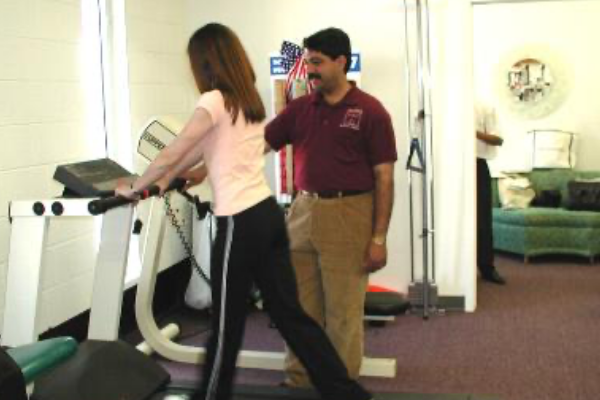According to the WHO, neurological disorders affect up to 3 billion people worldwide and over 1 in 3 people are affected by neurological conditions. We have proven balance exercises that are great for your brain and body.
These neuro balance exercises act as an effective treatment for neurological disorders to help you feel steadier and more confident on your feet.
You can do these from the comfort of your home or take professional services of an expert for neurological physical therapy exercises. Whatever the scenario is, they will make a real difference in your everyday life.
What is Neuro Balance?
Neuro balance therapy uses simple exercises to help your brain and muscles communicate better. This makes you steadier on your feet and less likely to fall. It’s great for anyone who feels a bit wobbly or wants to move more confidently.
How Can I Improve My Neurological Balance?
To get better at balancing, try exercises that challenge your body’s sense of position and movement. According to a study in the Journal of Physical Therapy Science, doing exercises like tai chi, standing on one foot, or using a balance board for about 15 minutes, three times a week, can really help. You might start noticing improvements in 4 to 6 weeks.
Are Balance Exercises Good for the Brain?
Yes, neuro balance exercises are great for your brain. They don’t just help your body but also increase your mind’s sharpness. A study in Frontiers in Aging Neuroscience showed that older adults who did balance exercises improved their memory and spatial awareness. This means that staying steady on your feet could also keep your brain healthy.
Now you should look for child, adult or physical therapy exercises for elderly at home, whatever is your requirement. For more specific neuro balance plans of exercises, we will share tested methods below.
How Long Does it Take to Improve Balance?
Getting better at balance takes a bit of time—it varies for each person. But if you keep at it, practicing neurological physical therapy exercises regularly, you might start to see yourself getting less wobbly in about 3 to 6 months. The key is to keep practicing to get steadier.
As per our research from Age and Ageing found that within 12 weeks of regular balance exercises, people generally show real progress in how well they can move and balance.
6 Neuro Balance Exercises Recommended By Neuro Experts
We are adding a few balance exercises ideal for neurological health, these are not only proven but tested on our patients and got positive results.
Our specialists invest their efforts into each balanced exercise plan, whether it starts from single anodyne therapy for peripheral neuropathy or they are applying a bunch of exercises on the same patients. The amount of care and dedication will stay the same.
So trust their advised exercises peacefully!
- Heel-to-Toe Walk
For the Heel-to-Toe Walk, place the heel of one foot directly in front of the toes of your other foot with each step, as if you’re walking on a straight line. This exercise helps to fine-tune your balance and coordination, and best for daily mobility.
If you practice this daily it can lead to noticeable improvements in your walking stability within weeks. Then you will pass narrow spaces much more easily.
- Single-Leg Stance
To practice this, stand on one leg with the other lifted slightly off the ground. In your mind, aim to keep your balance as long as possible.
You can start with short intervals, gradually increasing as your confidence grows. Then regular practice can improve muscle strength in your legs and your overall balance.
Furthermore, it will potentially increase your stability by up to 30% after consistent practice over several weeks.
- Sit-to-Stand
In this one of the best neuro balance exercises, you need to start in a seated position in a chair, stand up without using your hands for support, then slowly sit back down.
Repeat this exercise to strengthen your leg and core muscles, crucial for maintaining balance. We suggest that incorporating this into your daily routine can make a prominent difference in your lower body strength and ease of movement.
Moreover, with improvements noticeable in a few weeks, making activities like standing from a seated position up to 50% easier.
- Step-Ups
You need to use a stable step or bench for this exercise. Then, place one foot on the step, press through your heel, and lift your body up so both feet are on the step. Then step back down and repeat on alternating legs.
It’s consistent practice affects leg strength and balance for climbing stairs or stepping onto curbs much safer. Only aim for a few minutes each day to observe improvements in your stepping confidence and ease over a month.
- Tai Chi Movement Sequences
Tai Chi, is an ancient Chinese martial art that involves slow, deliberate movements to strengthen balance and stability. Even dedicating 10-20 minutes a day to simple Tai Chi sequences can reduce fall risk by improving your ability to control your body’s movements. People often see notable increases in balance within just a few weeks of regular practice.
- Balance Reach
You will stand and extend one leg slightly back by keeping your toe on the ground. After that, reach forward with your opposite hand, then return to the starting position.
Do this with alternate legs and hands, it’ll only work on your leg muscles but also challenges your balance and coordination. If you are doing this for a few minutes daily then expect a result in improved stability and leg strength to reach easily for items without losing your balance.
How Our Individual Neuro Balance Plans Can Help?
If your condition needs a professional check up then ideally hire a physical therapist, upon finding you will get personalized neurological physical therapy exercises plans.
We additionally have a team of profound doctors and physical therapists who are ready to take your case happily.
That’s All From Experts!
In wrapping up, it’s clear that dedicating even a little bit of time to neuro balance exercises can have a profound impact on our lives. They’re not just activities; they’re a gentle, caring way to nurture our minds and bodies.
Research finds that doing these kinds of activities can cut down the risk of falls by up to 40%. It’s not just about not falling over, either. These exercises keep our nervous system sharp and makes life a bit easier and more fun.




